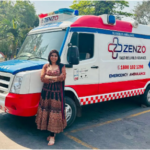Rethinking Emergency Response: Why Every Minute Matters
In a medical emergency, time is not just important—it’s everything. But the way emergency medical care has traditionally worked isn’t always fast enough.
In most cases, when someone calls an ambulance, they’re not just waiting for transport—they’re waiting for treatment. That’s the real issue. In conditions like heart attacks, strokes, or major trauma, survival depends on how quickly medical intervention begins—not just how fast a hospital is reached.
Zenzo’s 15-minute ambulance model isn’t just about getting to the scene faster. It’s about changing what happens in those first 15 minutes—bringing hospital-level care to the patient immediately, before they even step inside an ER.
How Zenzo’s 15-Minute Ambulance System Works Differently
- Treatment Begins at the Scene, Not the Hospital
The biggest limitation of conventional ambulances? They focus on transport. But many medical emergencies don’t allow for that kind of delay. A patient in cardiac arrest doesn’t need a hospital first—they need defibrillation right now.
That’s why every Zenzo 15-minute ambulance is designed to function as a mobile critical care unit with:
- Trained emergency teams who start treatment on arrival—not after hospital admission.
- Equipment for advanced cardiac response, airway management, and trauma care.
- Telemedicine support, so specialists can guide interventions even before the patient reaches a hospital.
The moment Zenzo paramedics arrive, treatment starts immediately. That’s the real game-changer.
- Faster Response Through Strategic Deployment
It’s not just about how fast an ambulance can drive—it’s about where it’s stationed in the first place.
Zenzo’s system ensures:
- Ambulances are pre-positioned in high-risk locations—commercial hubs, industrial areas, and event spaces.
- AI-driven dispatch ensures the closest unit is sent immediately.
- Emergency teams are deployed where incidents are most likely to occur, rather than waiting for a call to come in.
This approach means no patient waits longer than 15 minutes for both arrival and treatment to begin.
- Reducing Overcrowding in Hospitals
A major side effect of slow emergency response? Overloaded ERs. When patients don’t get the right care early enough, they arrive in worse condition—leading to longer hospital stays and congested emergency departments.
With Zenzo’s rapid treatment-first model, hospitals receive stabilized patients, not deteriorating ones—freeing up resources and improving overall care efficiency.
A New Era in Emergency Care
The future of emergency response isn’t just about faster ambulances—it’s about eliminating the delay between crisis and care. Zenzo is leading this transformation, proving that treatment should begin within 15 minutes of an emergency, not just after hospital admission.
With smarter ambulance placement, real-time intervention, and hospital-grade care at the scene, the 15-minute model is setting a new gold standard for medical response in India.
To know more, visit https://zenzo.in/

